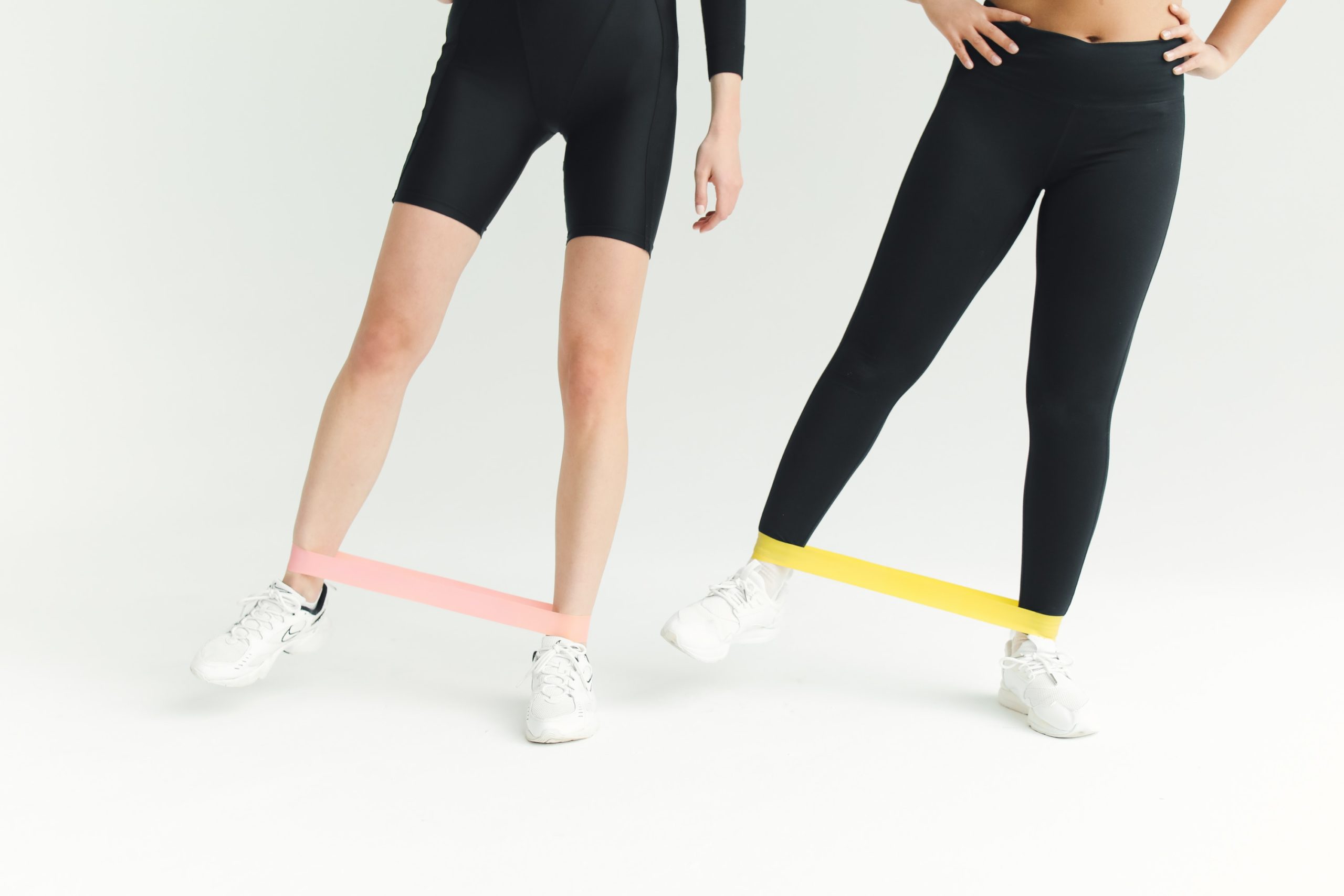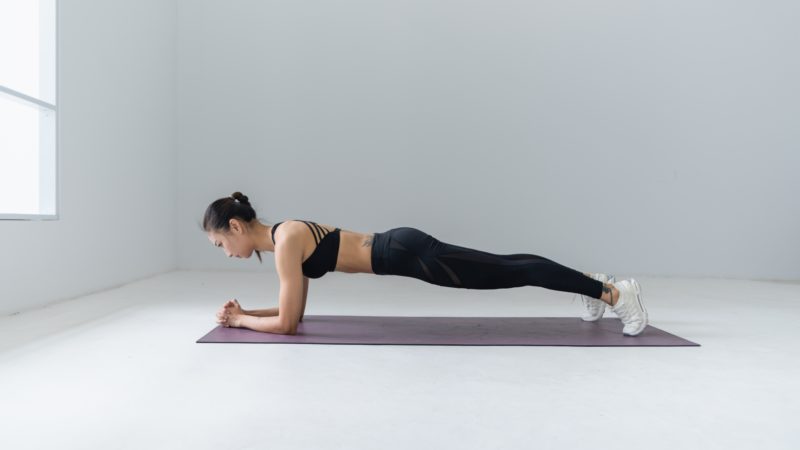Can You Build Muscle With Resistance Bands?

When it comes to muscle building, people often rely on weights instead of resistance bands. Don’t you want to know whether can you build muscle with resistance bands? After some research, this is everything we have found about resistance bands and their relation to muscle building.
Can You Build Muscle With Resistance Bands?
When people think about resistance bands to build muscle, some consider the rubbery bands of no use as compared to weights. However, this is not true. Resistance bands can help to build muscle. Not only are these easy to operate but also portable and remarkably efficient for gaining and strengthening muscles.
Resistance bands work in the same way as free weights to build muscle. These work by offering resistance to fight against even when having rest between the reps.
The trick to building muscle with resistance bands is by progressive overload and training close muscular failure.
Tips To Build Muscle Using Resistance Bands?
Below we have discussed how resistance bands can help you to build muscle. To build muscles effectively, you need to give adequate nutrition and recovery, muscle tension, adaptation, and progressive overload.
Strength training also helps in promoting muscle hypertrophy. In simple terms, Hypertrophy is when the muscles get injured or damaged, and muscle fibres are broken down. With proper nutrition and rest, your body helps to repair damaged fibres and merge them back together. This helps in building bigger and stronger muscles.
HOW TO PRACTICE PROGRESSIVE OVERLOAD?
Progressive overload is forcing the body to continue to adapt to more tension and stress than before. This will help you get bigger and stronger muscles. Do the following:
- Use higher tension bands- using resistance bands with higher tension of increased size will help in building bigger and stronger muscles.
- Increase reps- perform more reps to promote muscle exhaustion. When you use resistance bands, you must feel the contraction of muscles and feel the muscles burning at the end of every set.
- Up Volume- add extra sets to your workout session.
Benefits Of Using Resistance Bands to Build Muscle
Muscle training using a resistance band is different from using weights. When you use resistance bands, the muscles feel constant tension. So the effectiveness and quality of each repetition will be improved.
Resistance bands are built on recruiting, stabilizing muscles, and doing a well-rounded workout. You can add them to your regular workout routine to increase intensity and bodyweight exercises. Resistance bands are highly versatile and offer multiple benefits, which are mentioned below.
Inexpensive and Portable
The biggest benefit about a resistance band is that they are portable, small in size, blendable, and extremely lightweight. You can easily take them along when travelling or store them in a small space for at-home workouts.
When comparing a resistance band vs. weights for the price, the former is cheaper. As they are one-time purchases, you will be saving a lot on your gym memberships.
Creates Mind-Body Connection
Stabilizing benches and weight machines focus on a single muscle group. Resistance bands can feel shaky and unstable and help in improving the core balance. The mind-body connection to control the band tension helps you to focus more on moment and movement.
Stabilizes Muscles
Resistance bands work great as an addition to your existing workout routine or to create a new routine altogether. These also provide the chance to recruit your stabilizing muscles and promote instability in movements.
For instance, you are doing a simple bicep curl using hand weights; gravity helps you to extend your arm back to the starting point. The instability makes the arms, chest, shoulders, and core lend some help when using resistance bands.
Decreases any Risk of Injury
Using free weights is a great way to improve strength and muscle. However, these do come with some risks. While lifting heavy weights and you start feeling fatigued, you put yourself up in a dangerous position.
Due to increasing weight, it can also injure vulnerable spots like wrists, back. Resistance bands do not carry any such risk.
Combine With Existing Workouts
You can add resistance bands to your existing workout routine. For instance, use a resistance band around ankles when doing squats to add tension to legs.
If you do any bodyweight exercise like push-ups, hold the band in each hand and wrap it around the back.
Great for Stretching
Resistance bands can also be used for stretching. Attach it to a pole, door or loop it around the leg when you lay down and bring it to your side. You can either use it to stretch your shoulders by bringing it on top of your head.
Safe in different health conditions
Resistance bands help greatly heal muscle injuries as they do not put extra stress on joints. These promote good blood flow and stimulation to the muscles and help in fast recovery.
Best Resistance Band Workout Plan
Squats
To perform standing squats, keep your legs parallel, bend the knees and draw gluten till your knee level. You can double the resistance band to create more resistance.
Hold both the ends with arms straight at chest level. Pulse the legs by bending and stretching the knees.
When you find the steady rhythm start drawing the band overhead and down till chest level. Always keep your arms strong and abdomen engaged. Keep your knees bent and arms in line with your shoulder. Do 20 to 30 reps.
Overhead shoulder presses & leg lunges
Another best resistance workout is leg lunches and shoulder press. Stand by keeping one foot in front and bend both knees to make a 90degree angle making a lunge position.
Hold the resistance band with both arms keeping straight, and draw the band overhead. Start stretching and bending legs while keeping the knees over your toes, abdomen engaged, and legs parallel.
Begin drawing your arms up and down like you do shoulder press when you lunge. Sync the shoulder press and knee bands together. Similarly, syn bending knees and drawing arms down.
Repeat this workout on each leg for 20 to 30 reps and then switch legs.
Abdominal curl
Another great exercise to include in your resistance band workout plan is abdominal curl to build stomach muscle.
Sit in the centre of the mat and hold the resistance band to your chest level, keeping both arms straight. Curl down the body slowly, keeping your abs engaged and making a C curve with the spine. Curl your body up slowly up an inch and then go down an inch. You have to exhale when you go up and inhale when you curl down.
You can also add variations like twisting side-to-side and squeezing the band to target your obliques. You have to wring your waistline like you would with a wet towel.
Repeat this workout for 23-30 reps to work your abdomen as you tone your arms and shoulders.
Oblique twists
Stand with legs hips wide apart in a parallel position. Hold the resistance band in front of your chest, keeping the arms straight. Twist it side to side. You have to start the movement from the waist and then squeeze your belly as you twist, working on your abdominal wall. Do athletes 20-30 reps of this exercise.
Bicep circles
To do bicep curls, you have to stand, keeping your legs in parallel position and hip wide apart. Stand on the center of the band and double up the ends around your wrists. Keep both arms close to your body and lift. Lower the band up and down slowly. When you curl your arm, focus on squeezing the biceps. Repeat this workout 20-30 reps.
Tricep kickbacks
Stand on the centre of the resistance band, keeping feet hip-width apart. Double the bands around your wrist and keep your arms close to your body. Squeeze your shoulder blades and arms back as you do in a dumbbell kickback. Squeeze using the band from the top of your arm. Repeat this exercise for 20 to 30 reps.
Rowing sequence
Stand on a resistance band and keep your legs wider than your hips. Bend the knees and waistline and hold your resistance band in any one hand crossing the front of your leg. Repeat this for 20-30 reps.
Final Words:
Safety First! Like with any equipment, resistance bands can also break down with time due to normal wear and tear from constant use. It is necessary to check the band frequently to make sure it is safe to use. Remember to check if the resistance band does not have tears.
When using resistance bands, never release the band under tension, as this can cause the band to snap. Never place the resistance band handles over feet; this increases the chance of slipping off.
If you have any questions regarding the proper usage of resistance bands, then check with your fitness professional.






